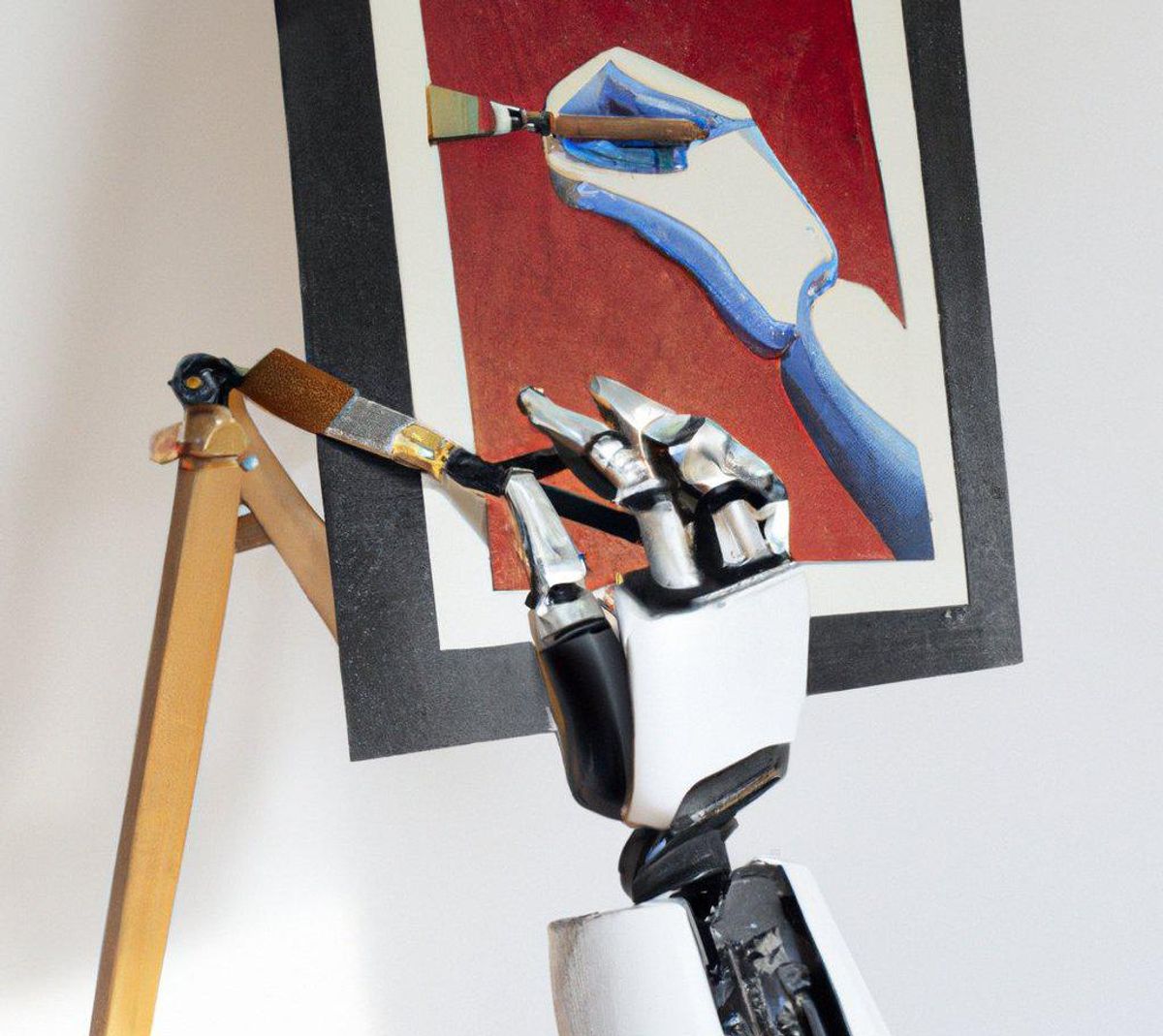Video Friday is your weekly selection of awesome robotics videos, collected by your friends at IEEE Spectrum robotics. We also post a weekly calendar of upcoming robotics events for the next few months. Please send us your events for inclusion.
ICRA 2022: 23–27 May 2022, Philadelphia
IEEE ARSO 2022: 28–30 May 2022, Long Beach, Calif.
ERF 2022: 28–30 June 2022, Rotterdam, Netherlands
RoboCup 2022: 11–17 July 2022, Bangkok
IEEE CASE 2022: 20–24 August 2022, Mexico City
CLAWAR 2022: 12–14 September 2022, Azores, Portugal
Enjoy today’s videos!
DALL-E 2 is amazing, and also superdumb, in that very specific AI-dumb way. I love it.
[ OpenAI ]
This has to be real. Please. I want it SO BADLY.
[ Agility Robotics ]
I was using my Skydio drone like this even before the software update ::shrug::
[ Skydio ]
How is this an April Fool’s joke? It’s a real skill that works!
[ Energy Robotics ]
This video from the University of Washington is the first look we’ve had at what DARPA RACER might look like: high speed off-road driving without any external references, not even GPS. Fun!
[ UW ]
You may not know this, but Roombas (especially the older ones) are superhackable, meaning that you can turn them into robotic sumo wrestlers:
So cool to see these old Roombas getting a new life of violence!
[ Twitter ]
Turn your friends into robots!
We demonstrate a novel interface concept in which interactive systems directly manipulate the user’s head orientation. We implement this using electrical-muscle-stimulation (EMS) of the neck muscles, which turns the head around its yaw (left/right) and pitch (up/down) axis. As the first exploration of EMS for head actuation, we characterized which muscles can be robustly actuated.
[ HCIL ]
Measuring water quality throughout river networks with precision, speed and at lower cost than traditional methods is now possible with AquaBOT, an aquatic drone developed by Oak Ridge National Laboratory.
[ ORNL ]
Why robots dogs are better than real dogs: dancing.
[ RPL ]
OTTO Autonomous Mobile Robots (AMRs) automate common material handling tasks, big and small, to help manufacturers tackle labor shortages, scale their business, and outperform the competition.
[ OTTO ]
During “On the DL,” Host Pieter Abbeel asks the guest of the week a series of questions unrelated to their professional pursuits. Its a chance to get to know our interviewees a little better! This week’s guest is OSU’s Engineering School Dean Ayanna Howard.
[ Robot Brains ]
I think that this video from ABB might be trying to communicate something, but I have no idea what.
[ ABB ]
PneuBots is a modular soft robotics construction kit consisting of seven types of self-foldable segments with high tensile strength, three types of pneumatic connectors and splitters, and a custom-designed box. The kit enables various assemblies to be made with the modular pieces, allowing creators to explore the world of soft robotics in playful ways. When combined with a FlowIO device, PneuBots allows seamless programmability of the different assemblies, enabling artists, designers, engineers, and makers to create dynamic, shape-changing, and interactive works that can be used for education, storytelling, dynamic art, or expression of affect and gratitude.
[ PneuBots ]
Nowadays, social robots have become human’s important companions. The anthropomorphic features of robots, which are important in building natural user experience and trustable human-robot partnership, have attracted increasing attention. Among these features, eyes attract most audience’s attention and are particularly important. This study aims to investigate the influence of robot eye design on users’ trustworthiness perception.
[ CHI 2022 ]
Flying and ground robots complement each other in terms of their advantages and disadvantages. We propose a collaborative system combining flying and ground robots, using a universal physical coupling interface (PCI) that allows for momentary connections and disconnections between multiple robots/devices.
[ CHI 2022 ]
Here’s an early concept from a startup called Phantom Cybernetics, exploring how augmented reality can be used to control physical robots in useful ways. “What we’re trying to do is to bring this all to market as a mature hardware-agnostic platform others can readily use, deploy and build upon without re-inventing the wheel,” the company tells us, and they’d be happy to hear your thoughts about what they’re working on.
[ Phantom ]
Thanks, Mirek!
Andy Zeng at Google gives a talk on “Retrospectives on Scaling Robot Learning.”
Recent incredible results from models like BERT, GPT-3, DALL-E makes you wonder “what will it take to get to something like that for robots?” While we’ve made lots of progress, robot learning remains hard because scaling data collection is expensive. In this talk, I will discuss two views on how we might be able to work around this: (i) making the most out of our data, and (ii) robot learning from the Internet. I will dive into several projects in the context of learning visuomotor policies from demonstrations, where I will share key takeaways along the way, and conclude with some thoughts on where I think robot learning is headed.
[ MIT ]
Evan Ackerman is a senior editor at IEEE Spectrum. Since 2007, he has written over 6,000 articles on robotics and technology. He has a degree in Martian geology and is excellent at playing bagpipes.



